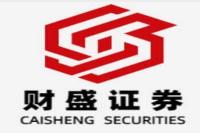All-Solid-State Battery Revolution: A Deep Dive into the Future of Energy
Meta Description: Explore the groundbreaking advancements in all-solid-state battery technology, examining key players like CATL, GAC Group, and Changan Automobile, and analyzing the challenges and opportunities in this rapidly evolving sector. #AllSolidStateBatteries #SolidStateBatteryTechnology #EVBatteries #ElectricVehicle #EnergyStorage
This isn't just another article about solid-state batteries; it's your passport to understanding the seismic shift happening in the energy landscape. Imagine a world where electric vehicles boast ranges exceeding 1000 miles on a single charge, where smartphones never need a top-up, and where grid-scale energy storage eliminates the intermittency issues of renewables. That future is closer than you think, thanks to the relentless pursuit of all-solid-state battery technology. This in-depth analysis dives beyond the hype, examining the technological hurdles, market dynamics, and key players shaping this revolutionary sector. We'll dissect the latest breakthroughs from industry giants like CATL and innovative startups, exploring the different approaches and their implications. Prepare to be amazed by the sheer ingenuity and the potential for transformative impact on our lives. We'll examine the technological breakthroughs, the significant players in the field, and the lingering challenges that still need to be overcome. This isn't just about reading headlines; it's about gaining a nuanced understanding of a technology poised to redefine our energy future. Buckle up, because this journey into the heart of all-solid-state battery technology is going to be electrifying!
All-Solid-State Battery Technology: The Next Big Thing?
The buzz around all-solid-state batteries (ASSBs) is deafening. Why? Because they promise a game-changing leap in energy storage technology, potentially solving many limitations of current lithium-ion batteries. Think significantly increased energy density, improved safety (goodbye, thermal runaway!), and longer lifespans. It's the holy grail of battery technology, and the race to commercialize it is fierce. But let's cut through the hype and examine the reality. While the potential is enormous, there are significant obstacles to overcome before ASSBs become mainstream.
Several companies are aggressively pursuing different technological approaches. For instance, some are focusing on sulfide-based solid electrolytes, others on oxide-based, and still others on polymer-based solutions. Each path presents its own set of advantages and challenges in terms of ionic conductivity, stability, and cost-effectiveness. This isn't a simple 'one size fits all' scenario; it's a complex interplay of materials science, engineering, and manufacturing know-how.
Key Players in the All-Solid-State Battery Race
The competition is fierce, with both established giants and nimble startups vying for dominance. Here's a snapshot of some key players:
-
CATL (Contemporary Amperex Technology Co. Limited): A global leader in lithium-ion batteries, CATL has significantly invested in ASSB research and development, boasting a team of over 1000 engineers dedicated to the pursuit. They're reportedly making progress with sulfide-based chemistries, reaching the 20Ah sample production stage. This demonstrates their serious commitment and substantial resources dedicated to this technology.
-
GAC Group: This Chinese automaker has publicly announced its intention to integrate ASSBs into its Aion brand vehicles by 2026. Their progress showcases the automotive industry's strong interest in the potential benefits of ASSBs.
-
Changan Automobile: Another major Chinese automotive player, Changan, has a similar timeline, aiming for ASSB vehicle integration around 2027-2030. This collective push from major automotive manufacturers highlights the perceived value proposition of the technology.
-
Other Notable Players: Numerous other companies, including smaller startups and established materials suppliers, are actively involved in various aspects of ASSB development. This dynamic ecosystem ensures a continuous flow of innovation and competition.
Challenges in All-Solid-State Battery Commercialization
Despite the intense interest and significant investment, several hurdles remain before ASSBs become commercially viable:
-
High Manufacturing Costs: Currently, the production process of ASSBs is significantly more complex and expensive than that of lithium-ion batteries. This is a major barrier to widespread adoption.
-
Scalability Issues: Scaling up production to meet the demands of a mass market presents considerable technical challenges. The delicate nature of solid electrolytes requires precise and controlled manufacturing processes, which are not easily scaled.
-
Interface Challenges: The interface between the solid electrolyte and the electrodes is crucial for efficient ion transport. Creating stable and high-performing interfaces remains a key technical challenge.
-
Dendrite Formation: The growth of dendrites (needle-like structures) in lithium metal anodes can lead to short circuits and safety hazards. Preventing dendrite formation is critical for the reliable operation of ASSBs.
-
Long-Term Stability: Ensuring the long-term stability and performance of ASSBs under various operating conditions is essential for their widespread adoption. This requires rigorous testing and optimization of materials and manufacturing processes.
These challenges require innovative solutions and substantial further R&D investment before ASSBs become a truly disruptive force.
The Promise of All-Solid-State Batteries: A New Era of Energy
The potential benefits of ASSBs are undeniably compelling:
-
Higher Energy Density: ASSBs could offer significantly higher energy density compared to lithium-ion batteries, leading to longer driving ranges for EVs and increased capacity for portable electronics.
-
Enhanced Safety: The solid electrolyte is inherently less flammable than the liquid electrolyte used in lithium-ion batteries, significantly reducing the risk of fire or explosion.
-
Extended Lifespan: ASSBs are expected to have a longer cycle life than lithium-ion batteries, reducing the need for frequent replacements.
-
Faster Charging: Some ASSB designs could allow for faster charging times compared to lithium-ion batteries, further enhancing their appeal.
The Future is Solid: A Look Ahead
While significant challenges remain, the future of all-solid-state batteries looks bright. The combination of substantial investment, intense competition, and the inherent advantages of the technology suggests that ASSBs are not just a futuristic dream but a rapidly approaching reality. The next few years will be critical in determining which technologies and companies emerge as leaders in this transformative sector.
Frequently Asked Questions (FAQs)
Q1: When will all-solid-state batteries be widely available?
A1: While several companies have announced ambitious timelines (some aiming for limited production within the next few years), widespread commercial availability is likely still several years away. Overcoming the technological and manufacturing hurdles discussed earlier will take time.
Q2: Are all-solid-state batteries safer than lithium-ion batteries?
A2: Yes, in principle, they are significantly safer. The solid electrolyte is non-flammable, substantially reducing the risk of thermal runaway and fires.
Q3: What are the different types of solid-state electrolytes?
A3: Several types are being explored, including sulfide-based, oxide-based, and polymer-based electrolytes. Each has its own strengths and weaknesses regarding ionic conductivity, stability, and cost.
Q4: What is the current cost of all-solid-state batteries compared to lithium-ion batteries?
A4: Currently, ASSBs are significantly more expensive to produce than lithium-ion batteries. However, as production scales up and manufacturing processes are optimized, costs are expected to decline.
Q5: What applications will benefit most from all-solid-state batteries?
A5: Electric vehicles (EVs) are the most obvious beneficiaries, but other applications, including portable electronics, grid-scale energy storage, and aerospace, will also see substantial improvements.
Q6: What are the environmental implications of all-solid-state battery production?
A6: The environmental impact will depend on the specific materials used and the manufacturing processes involved. Research is ongoing to minimize the environmental footprint and ensure sustainable production practices.
Conclusion
The development of all-solid-state batteries represents a pivotal moment in energy storage technology. While hurdles remain, the potential benefits are immense, promising a future with safer, more efficient, and longer-lasting energy solutions. The race is on, and the companies that can effectively navigate the technological and manufacturing challenges will be handsomely rewarded. The next decade will likely witness a dramatic shift in the energy landscape, with all-solid-state batteries playing a central role. It's a thrilling time to be involved in or simply observing this exciting technological revolution.



